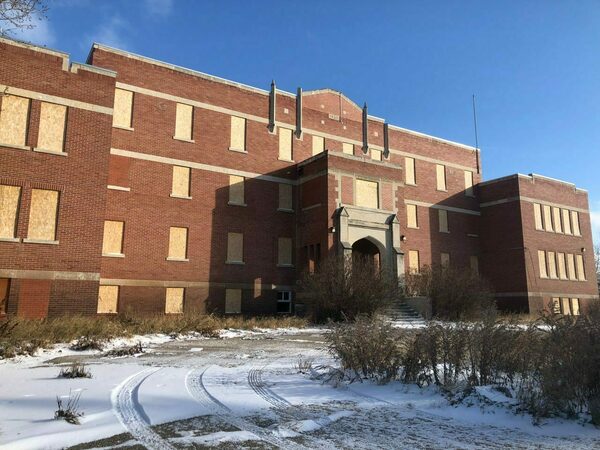We’ve all heard the news in recent years: Canadian historians, government officials, or First Nations representatives have been discovering mass graves of Indigenous children close to the residential schools which the government and religious institutions, most notably the Catholic Church, used to isolate children from their parents and communities to assimilate them into the “white race.”
As the last of these schools closed in as recently as 1998, the effects of the residential school system are still deeply felt by First Nations. Thousands of children never returned home, Survivors suffer from mental health consequences, and whole communities see that centuries of oppression by non-Indigenous colonial institutions continue to destroy their opportunities for economic development. This September 30, Canada National Day for Truth and Reconciliation, non-Indigenous peoples and institutions must recognize that reconciliation requires the cooperative building of concrete development opportunities, not simply nice words and public spectacle. Reconciliation also means economic justice.

Last May, I spent a week in southern Saskatchewan, where First Nations like the Muscowekwan, the Cree, and the Kawacatoose live in semi-autonomous lands and communities. In my conversations with representatives from these and other First Nations, they informed me about their continuous efforts to preserve historical memory — and make non-Indigenous Canadians aware of the material, economic scars that history has created.
Recently, Muscowekwan Survivors successfully convinced the Canadian government to protect the Muscowequan Indian Residential School, the last residential school in Saskatchewan, to turn it into a museum and archive. At the same time, Survivors taught me that the traumatic experiences at residential schools left deep scars that have caused generations of broken families, single women heads of households, persistent poverty, gender-based violence, alcohol and drug addiction, and high rates of suicide.
One First Nations recruiter for a mining company said, “One of every four men I interview for a possible job is an addict.” The Canadian Community Well-Being Index, which measures the quality of education, labor force activity, income, and housing, consistently places First Nations communities below non-Indigenous populations. One of the most alarming measurements reveals that average housing quality (houses not in need of repair) for non-Indigenous communities sits at 90.7 — house quality in First Nations sits at 60.5.
Unsurprisingly, First Nation leaders show skepticism regarding efforts towards Truth and Reconciliation from the Canadian government. “Are our non-Indigenous brothers and sisters truly willing to face and embrace the hard truths of this painful history?” an Elder asked.
The Commission, active from 2008 to 2015, was established to document the history and lasting impacts of the residential school system on Indigenous students and their families. Their final report launched a more exhaustive process of national reckoning, giving way to the National Center for Truth and Reconciliation, housed by the University of Manitoba. However, First Nation leaders insist on the limitations of the Commission and the Center, as they are state-run and not community-dictated efforts, provide no avenues for prosecuting known perpetrators, and have not proposed a concrete policy agenda for the alleviation of the material, economic underdevelopment of Indigenous communities.
In an attempt to provide a more concrete grounding to reconcile with Indigenous peoples, Global Affairs Canada recently published their 2021-2025 Action Plan on Reconciliation with Indigenous Peoples that provides a framework “to guide the department’s efforts to advance the rights, perspectives, and prosperity of Indigenous peoples in Canada and around the world.” This document commits Canada to abide by a human rights approach based on the UN Declaration on the Rights of Indigenous Peoples Act. Within its six goals and 24 proposed actions, the Plan “enables First Nations, Inuit, and Métis peoples in Canada to access economic opportunities” and “promotes the strengthening and implementation of international standards for responsible business practices that include Indigenous perspectives.”
During my visit to Saskatchewan, I could already see some results stemming from a more concrete and material understanding of what reconciliation should entail. While centuries of prejudice still lead many surrounding non-Indigenous communities to seldom interact with First Nations, small non-Indigenous towns like Humboldt, with a population of 6,000, are encouraging an active reconciliation process through its Chamber of Commerce, city government, and businesses. In addition to providing young Indigenous people with vocational training, local non-Indigenous and Indigenous institutions encourage partnerships that allow First Nations communities to use their natural resources for their own good.
Muskowekwan governance, headed by chief Jamie Wolfe, has recently partnered with global mining corporations to use the Muskowekwan First Nation Potash Mine, one of the world’s most significant potash deposits, for the economic development of the First Nation. Committed international and local corporations have established a quota of 20 percent of the Indigenous workforce and procured goods from First Nation companies.
The beginnings of an economic reconciliation are already underway. The provincial government and local companies came together to fund an Indigenous-run wellness center focused on a comprehensive approach to cultural and economic healing that relies on historical and modern practices. The center also provides family housing and community-supported house repair.
The First Nation leaders said the burden of reconciliation — especially of economic reconciliation — should not fall exclusively on the shoulders of Indigenous communities. Non-Indigenous peoples, starting with the Canadian government and corporations, must recognize that responsibility for alleviating centuries of cultural and economic oppression falls on them.
The Muskowekwan Nation demonstrates how Indigenous-led efforts can bring the public and private sectors together to benefit Indigenous communities and their allies — and how reconciliation can incorporate economic justice within its framework.
This September 30, our Canadian neighbors’ ongoing experiences and national commitments should encourage us to ask what a nationwide effort toward truth and reconciliation should look like. If we consider economic justice on the American agenda, it may be time to make it part of a coherent reconciliation program. As the Elder asked, "Are our non-Indigenous brothers and sisters truly willing to face and embrace the hard truths of this painful history?